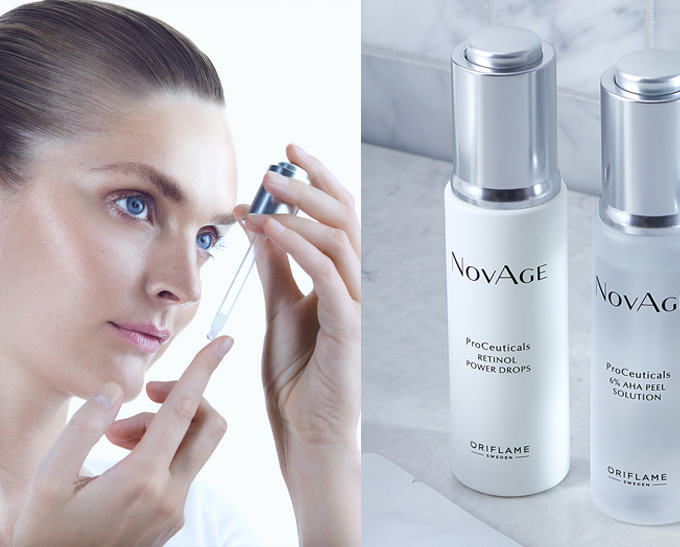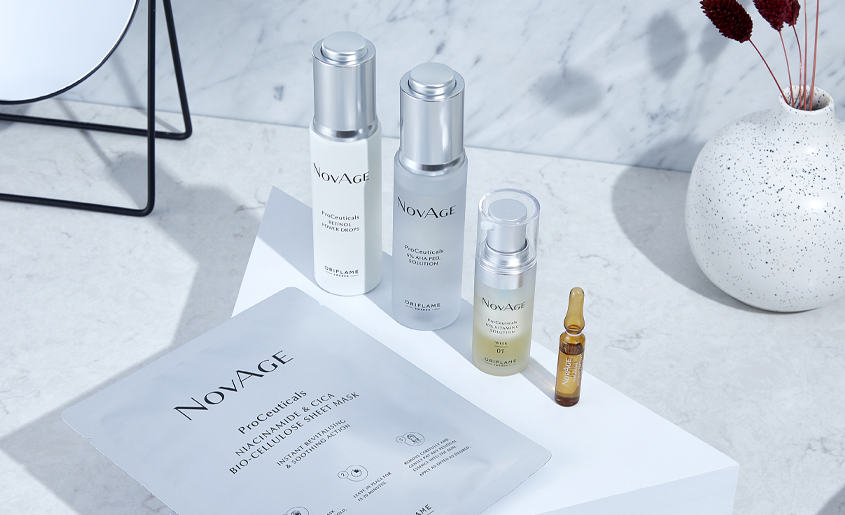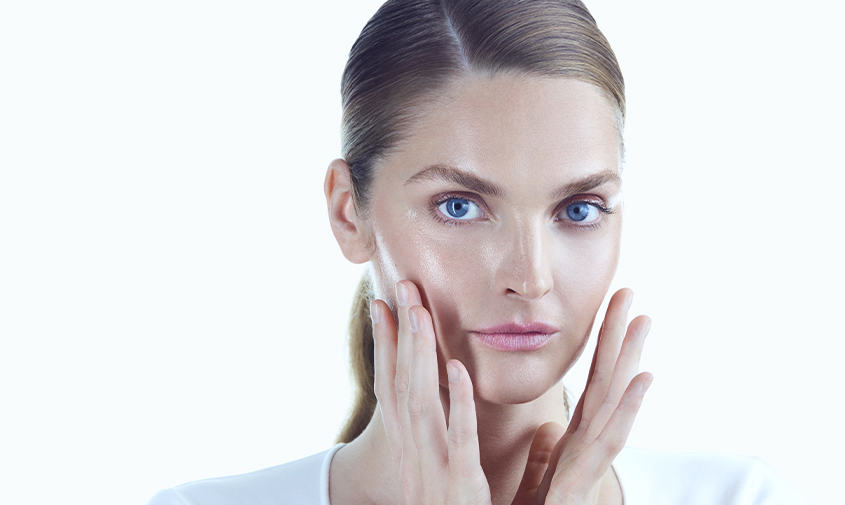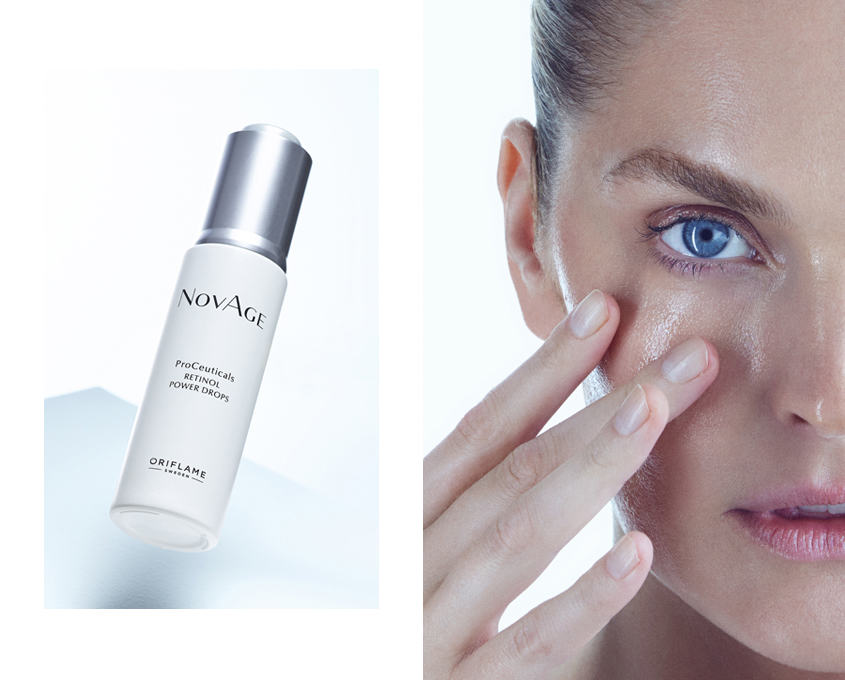Retinol is the gold standard of skin care ingredients for good reason: it works to reduce the appearance of wrinkles, refine skin texture and promote skin cell turnover -for healthier more youthful-looking skin. As external factors like sun exposure, combined with internal factors like hormones and genetics, can result in the appearance of wrinkles and a decline in skin texture as we get older, retinol has a seriously reliable performance track record of combatting these unfortunate effects of ageing. Here’s how to incorporate this superstar ingredient into your skin care routine.

Build up slowly
In a few words? The slower the better. The best way to reap the benefits of retinol is to gradually build up your skin’s tolerance. Let your skin acclimatise by starting at a low concentration and working upwards.
“We recommend that you use the product once during the first week, twice (on non-consecutive days) during the second week, three times during the third week (on non-consecutive days), and so on until you find that your skin can tolerate once daily application (in the evening) consistently,” says Gabriela Zuanazzi, Oriflame’s Principal Formulation Chemist.
If your skin is sensitive, another option is to start with a gentler form of Vitamin A, such as retinyl palmitate (though results might not be as impressive as with retinol and will take longer to achieve).
Find the right percentage for your skin
There’s a perception that the higher percentage of retinol a product has, the better it is for your skin – but that’s not necessarily true. While it is true that a higher percentage of retinol will mean faster results, that shouldn’t necessarily be your goal.

Retinol does have the potential to irritate the skin at low and even moderate percentages. Yet even at very low percentages retinol has proven results – you will see improvements in signs of ageing, a reduction in pore size, better overall skin health, and healthier looking skin. At low levels – and combined with antioxidants (like Vitamin C) and a broad spectrum sun screen – it’s even been shown to have some defense against environmental pollution.
At the percentage of 0.1%, retinol has been tested and clinically proven to improve multiple signs of ageing: at this level you will see a strong increase in collagen and hyaluronic acid, two key components for skin health and skin firmness, and for getting rid of the appearance of fine lines and wrinkles.
Yet, you don’t actually have to move to a higher percentage of retinol with time. If you stick to 0.1% retinol and if you continue to use it over a longer period of time, you’ll see better and better results.
Start in your 20s
While there is no “set” age to start using retinol – and using retinol at any age will give great skin results - many experts suggest starting to use it in your twenties when collagen and elastin production starts to slow, contributing to fine lines (such as those dreaded frown or laugh lines, and crow’s feet). Retinol doesn’t only help combat existing signs of ageing, it also helps prevent them, so it’s always a good idea to start introducing it to your routine sooner rather than later!
Use regularly
It’s always a good idea to start good skin care habits early on and as a very good preventative measure against skin ageing. While there are no major consequences of “going off” retinol, consistent use is one of the best ways to maximise the effects.
Skin cell turnover takes about 6-8 weeks (depending on age), and while retinol certainly helps to speed up the process, you won’t start to see significant results until after a few weeks. That’s why we recommend our NovAge ProCeuticals Retinol Power Drops to be used for 4-8 weeks as an intensive regimen.
Many of the treatments in our NovAge ProCeuticals range offer targeted solutions to specific skin concerns at a certain point in time and can be incorporated into your routine whenever you see fit.
Only use retinol at night
Sunlight and air causes retinol to break down, reducing its efficacy and quality. Thus, as a precaution, it is advised to only use it at night. In addition, avoid sunlight and always wear sunscreen to protect skin when using.
Because retinol can lose its efficacy so easily, it’s extremely important to find a product that is packaged in a way as to keep the active ingredient protected. The retinol in our NovAge ProCeuticals Power Drops is formulated using encapsulation technology - meaning the pure retinol is protected inside a capsule which provides an added layer of protection in keeping the retinol fresh and protecting its ability to perform.
Can anyone use retinol?
Retinol is suitable for most skin types. The key is finding the right formula and concentration for your unique needs/skin type.
What ingredients can I use when using retinol?
When using a targeted treatment like retinol, you want to ensure that it works harmoniously with the rest of the products in your routine in order to maximise results.
Definitely combine retinol with:
• Gentle cleansers. Harsher cleansers, astringents, and toners can further dry and irritate the skin
• A good moisturiser (after you’ve applied your retinol), or serums that feature hydrating ingredients to help lock in moisture, such as hyaluronic acid, peptides, and ceramides
• SPF! This is a general rule all day, every day – especially when using retinol
• We recommend using a Vitamin C serum during the day and your retinol at night
Check out our NovAge ProCeuticals Retinol Power Drops containing an active level of 0.1% pure retinol.




